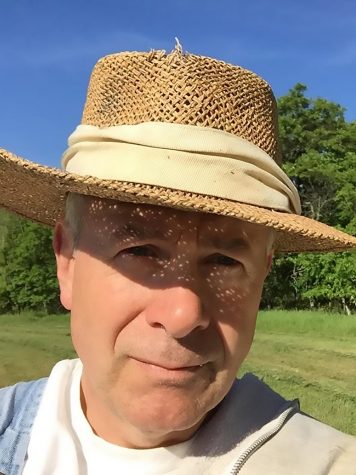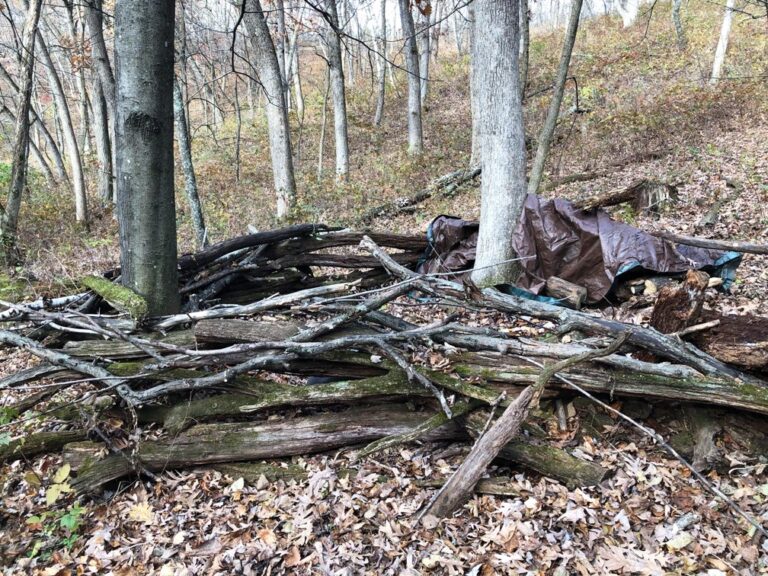Making scents of deer hunting
Chris Hardie’s deer stand is ready for 2021 hunting season that opens Saturday, Nov. 20.
November 14, 2021

I learned a new word the other day referring to the desire of hardcore deer hunters to be in their stand as the fall breeding season heats up.
Apparently, a “rutcation” is when you set aside some vacation days so that you can be in your deer stand rather than behind your desk at the height of the rut. The rut is the deer breeding season.
With due respect to the fairer sex who hunt deer, the seasonal physiological, behavioral and chemical changes in male deer hunters seem to match that of the bucks they seek. At the peak of the time of year when bucks seek does, deer hunters seek deer stands.
I do not hunt the bow season. It’s not that I don’t want to, but carving out the time during the time of year when our winery and inn are their busiest and my day job has demands doesn’t work for me.
I do, however, take the time to enjoy the gun deer season — particularly the opening weekend. This year’s gun deer opener is Saturday, Nov. 20. That is usually the extent of my rutcation, although I may try to add some hunting hours on Thanksgiving if the season allows.
Some hunters plan their hunts year-round. They plant crops, create shooting lanes in the brush and spend hours before the season scouting with game cameras.
My offseason preparation consists of replacing a couple of logs on my ground stand, cutting some firewood for my outdoor wood stove and observing the signs that the deer are there. I know the land and know the deer’s patterns.
Last week during my pre-hunt visit to my stand, I evicted a few mice from my woodpile and cut a few more logs. I also noticed the signs of bucks in my valley with scrapes and rubs.
Bucks like to mark their territory. Rubs are when bucks rake their antlers on brush, small trees or saplings. They peel the bark and leave behind scents from their forehead glands. You can’t judge the size of the buck by the size of the tree. Although bigger bucks tend to rub bigger trees, smaller bucks do it too. But it is true that older bucks are more active with rubs.
Bucks also create scrapes by pawing a bare patch of ground, usually in an oval shape and often under trees. The buck leaves behind scent from a gland located between the toes of their front hooves and will sometimes urinate down the tarsal glands on their inner lower legs for some additional aroma. I don’t think it’s a coincidence that the odor is similar to that of hunting clothes worn at deer camp for 10 straight days.
It’s the perfumey world of Eau de Rut when it comes to deer breeding season. There’s a lot of money and research that goes into creating both natural and artificial deer scents in a bottle with the purpose of attracting bucks.
While bucks often freshen up their scrapes, hunting over them isn’t a guarantee as most are visited after dark. But enthusiastic hunters looking to relieve their bladders can sometimes attract bucks by urinating on the scrapes themselves. No, I am not making this up. And no, I have not tried this technique, even if a similar effort failed to put out a tractor fire a few years ago.
It’s not just the ground that deer scent up. The overhead branches or the ends of the twigs are where bucks — and does — will chew and lick and deposit additional scent from their forehead and eye glands.
Bucks spar and fight for dominance. To the victor goes the spoils — but only for a short time. A doe will only accept a male during peak estrus — which lasts only 24 to 36 hours. If a doe is not bred, the cycle can repeat in 23 to 30 days.
The rut in Wisconsin usually peaks before the gun deer season, but bucks still chase does for some of that late-season action. It’s nature’s way of assuring spring births for a higher survival rate.
I look forward to my 46th season of deer hunting. Here’s to a safe and successful hunt.













